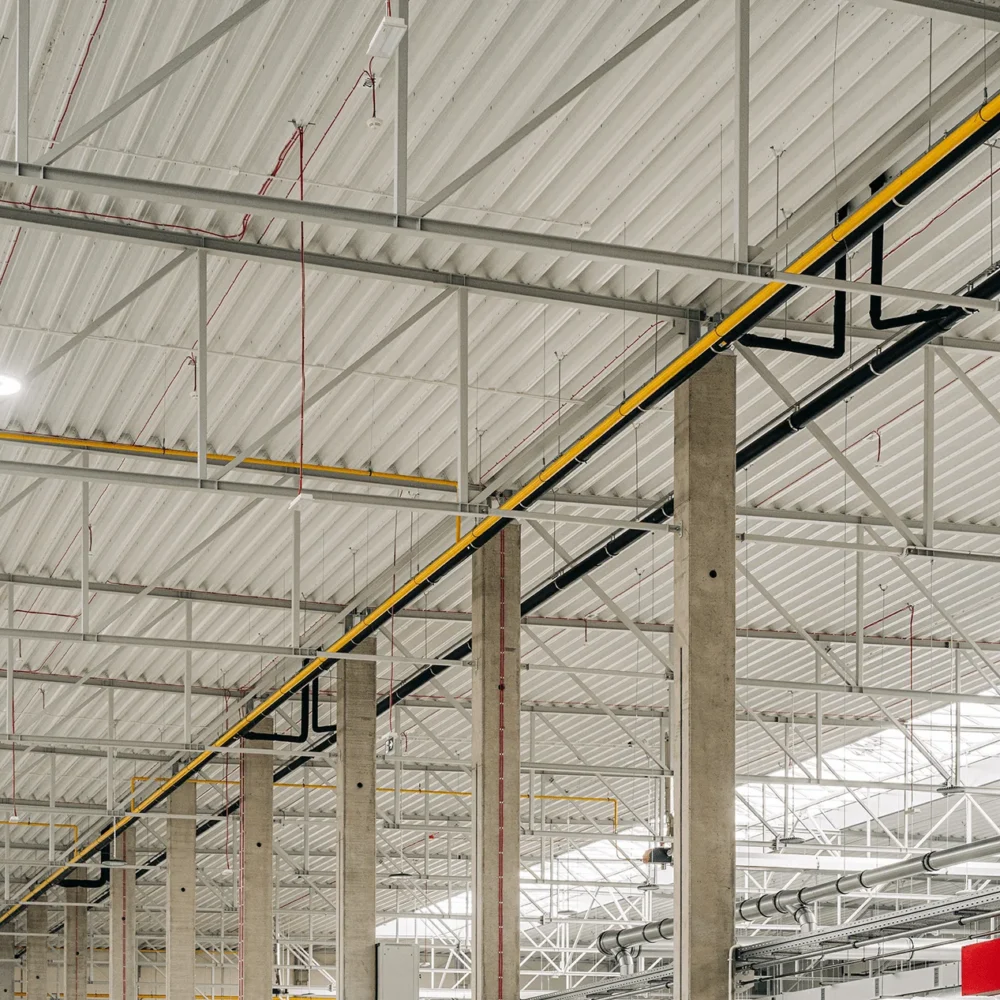
Adequate drainage of the steel hall roof is one of the very important elements that have to be planned already at the design stage. Why is it so important? Because water remaining on the roof of the structure can exert too much strain on the steel components and thus pose a risk to the health or life of those inside. What are the most commonly used drainage systems and how are they selected?
The most commonly used roof drainage systems
It is difficult to imagine a large-scale building with a flat roof that does not have a properly built drainage system. Whichever system is used in the construction of the hall, it should quickly and efficiently remove the water that appears on the roof, which is its primary task. Two basic systems for steel hall roof drainage are commonly used: gravity drainage and vacuum drainage. The designer decides which system is better based on, among other things, the local zoning plan, the type of building and the shape of the roof itself. What is the difference between the two solutions?
Gravity drainage of the steel hall roof
Gravity drainage of flat roofs consists of such elements as PVC or steel piping as well as drains and fittings joined together with the so-called socket connections. How does this system work? This type of hall roof drainage, as the name suggests, uses gravity. As such, it requires appropriate slope and risers, as well as careful selection of the diameter of the gutters and pipes, taking into account air and debris that accumulate inside. This system is used mostly for industrial buildings with an eaves roof. Note that gravity drainage is generally considered to be less complex.
Vacuum drainage – basic system components
The latter referred to is the vacuum roof drainage. It consists of roof drains, pipes, fittings and fasteners with a mounting rail, brackets and slings. This type of roof drainage system, as the name suggests, forces water to move by creating negative pressure. Where does the vacuum come from? Air baffle in the drains means that during rainfalls, when a certain water level is exceeded, the air supply closes so that the water fills the pipes completely. This causes the water to flow more quickly which, in turn, leads to self-cleaning – the debris does not build up in the piping because the flowing water pushes it out. It also allows for a smaller diameter piping to be used, which weighs less and exerts less strain on the building’s load-bearing structure. In addition, slopes are not needed here, so it is easier to plan out the entire piping. Vacuum drainage is mainly used for draining water from a flat roof with an attic.
How do I select roof drainage?
The general contracting of industrial buildings includes, among other things, advice on the roof drainage system. What has to be taken into account when choosing the best solution? Among other things, the location of the facility, which affects the amount of precipitation throughout the year and the wind force, the dimensions of the industrial hall, especially if you need to drain a flat roof with an attic and want to use a vacuum system – then the height and width of the facility must meet specific standards, as well as the permissible structural load. The roof drainage depends also on the catchment area – for small catchments a gravity system will be better, the cost of the materials needed to build the system and, if a vacuum version is planned, the cost of the design.



